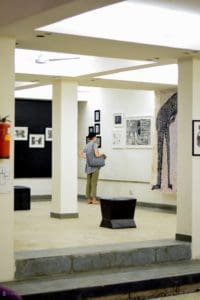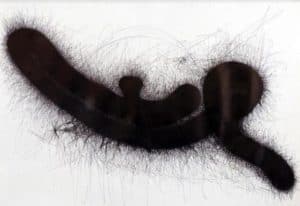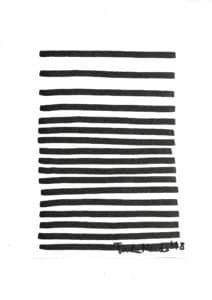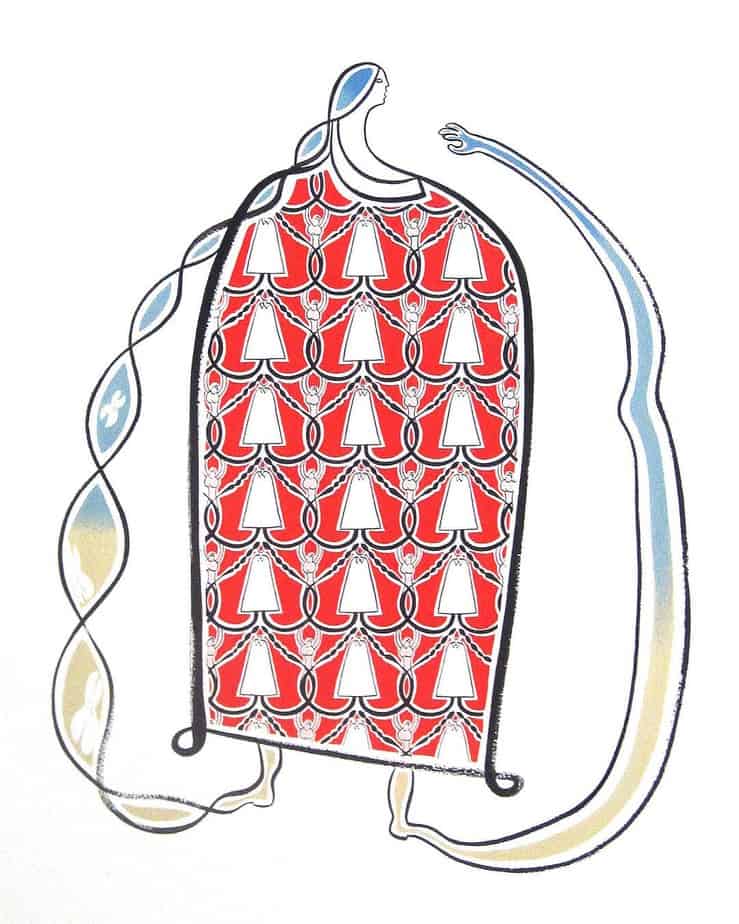Tarini Sethi is making the art of using a pen and paper into a real deal. She curates exhibitions, giving emerging artists a space
Since the beginning of 2018, the art scene in India has been experiencing a good uplift from practitioners and curators towards creating a space for it to thrive, in all its forms and possibilities.
There is Jagdip Jagpal, current member of development board at Royal College of Art – previously worked with Tate Modern – who joined the India Art Fair as the director with bigger plans for the art community in South Asia. Coming on board IAF, last year in August, she aspires to make the world aware of the South Asian art practice, while working hard to create a democratic art market for it in the country.
But even as the Art fair was taking place in the well-furnished NSIC grounds in Okhla, this February, there was a bolder version of a fair taking place simultaneously in an old furniture factory in Khirki Extension. It was called ‘The Irregulars Art Fair,’ India’s first ‘anti-art’ fair that curated works of independent artists in the country looking for a suitable space to present their work.

Tarini Sethi, a Pratt Institute graduate, working in New Delhi as a freelance artist, curated the show that exhibited varied works, from paintings, sculptures, photography, digital art, to films and performance arts. A programme that turned out to be a success, inspired Sethi to do another gig called ‘Drawing is Dead’ to highlight drawings, made by hands. What was exceptional about this exhibition was the way it invited only handmade works in any material an artist chooses to work with.
But what is a drawing? Ever felt the need to use a pen and paper while speaking to someone because words were not enough? How a scribble of a few lines is so much more explanatory than spoken words? That is exactly where drawings come in handy for many practitioners – during an initiation of an idea or as a mere amusement.
Drawing is Dead, questions the very state of analogue drawing in the digital age, when most artists use the correctness of computers to produce error free works. This curation establishes the presence of analogue art.
To know about what gives birth to such exercises in the art space, we spoke to Sethi about her vision as an art curator.
The exhibitions you have been curating are able to stand out. You did ‘The Irregulars Art Fair’, during India Art Fair in February this year and the recently concluded ‘Drawing is dead’. What is your intention while you do such exhibitions, specially the last one?
I have a very simple plan when I start curating shows, and that is to give a space to as many artists as possible. That said, I would like to be showing the best art when it comes to such artists and want to change the landscape of the art market to be more accessible.
What are your thoughts on the current art scene in the country, and the newly appointed fair director of IAF?
I think the current art scene in India has a long way to go. What I would like to see is people spending their Sundays going to galleries, regular normal people who are not artists or art enthusiasts.

I am so delighted about the newly appointed director. Her previous experiences at Tate Modern and other cutting edge institutions definitely give her a better understanding on how to improve the art scene in South Asia. She promises to bring a discerning eye to the great developments that are happening here and put focus on not just art collectors and galleries but the artist themselves.
I hope in the future, IAF and Irregulars can collaborate to bring in more independent younger artists to the limelight.
What is your understanding of drawing as a practice?
As a drawer myself, drawing is on a league of its own. It is the beginning and end of art. A lot of people look at a drawing as an unfinished picture because there is at times not much colour, or its done on paper instead of canvas. For me, drawing is the most detailed form of art.
What did you learn through these exhibitions?
I have been curating for three years now and every time I curate a show I make more mistakes and learn from them. I think the more shows I am doing, the more I am understanding the art scene in our country, and the more I am trying to rebel against it.
What is it that you are looking forward to do in the future?
I am looking forward to work on more installation based shows that are immersive and punch you in the stomach and stick with you for days after.
How do you think independent artists can protect their practice and also make a living?
I think in the age of Instagram, artists are getting exploited with this new idea of collaborations. Artists, in general, have never been respected like they should. Yet now, this idea that companies want to use the artwork of artists in exchange for “ exposure” is the worst thing I have seen. I get emails all the time, asking to use my art in exchange for more “followers”. This coming from companies that have the money to pay artists. At the end of the day, even a nominal sum is better than nothing.
Artists need to start respecting each other and themselves, and the outside world needs to understand that art takes time, effort and sweat and should be treated as such.
DOTS AND LINES

“As an artist and as an individual, I don’t like to confine myself to one thing at a time. I like to work with different things simultaneously. I think thats why I decided to pursue art and become an artist, because you can be a scientist, a film maker, an activist, an inventor all at the same time. Such a thing is only possible if you can see & perceive even a dormant object as a potential idea or a form of communication.
My work on display at Drawing is Dead were 4 art works that are part of a bigger series of 12 loose Geometrical drawings, I call “Tracing my mind”. These drawings are a result of the body tracing the thoughts and the functioning of the mind using a mix of intentional and unintentional marks.”
– As told by participating artist Samridhi Kukreja, also known as Tuda Muda, to Patriot





